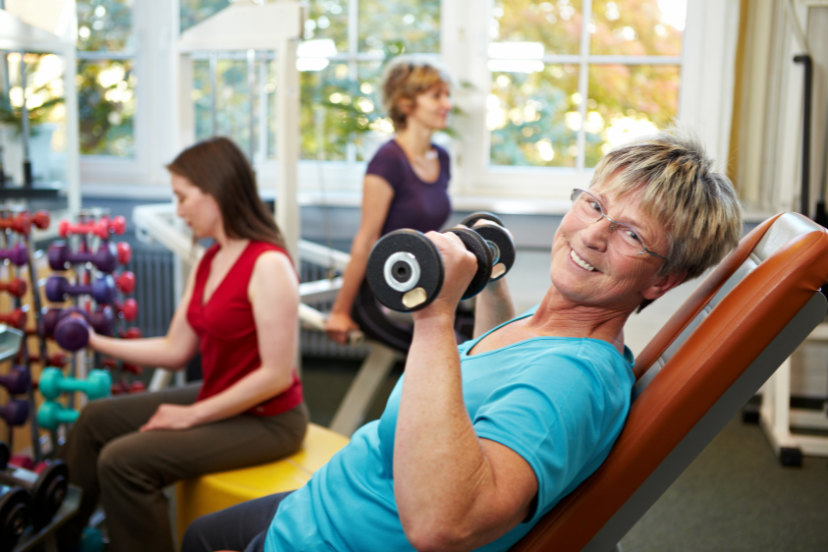Best Exercise Equipment for Osteoporosis: Tools for Stronger Bones
Introduction
Welcome to our deep dive into the world of osteoporosis and the best exercise equipment to combat its challenges. If
you or a loved one is navigating the journey of bone health, you’re in the right place. Osteoporosis, a
condition characterized by weakened bones, demands a thoughtful approach to exercise. In this article, we will
explore the top exercise equipment tailored to enhance bone density, flexibility, and overall well-being. Let’s
embark on a journey to stronger bones and a healthier you!
Understanding Osteoporosis: A Quick Overview
Before we dive into the specifics of exercise equipment, let’s take a moment to understand osteoporosis. This
condition, often called the “silent disease,” weakens bones, making them more susceptible to fractures. As bone
density decreases, the risk of fractures, especially in the hip, spine, and wrist, significantly rises. Now,
let’s delve into the heart of the matter: the best exercise equipment to tackle osteoporosis head-on.
Best Exercise Equipment for Osteoporosis
Weight-Bearing Workouts: Tackling Osteoporosis One Step at a Time
Weight-bearing exercises are the cornerstone of osteoporosis management. These activities engage your bones and
muscles against gravity, promoting bone density. Here are some stellar options:
- Brisk Walking: Lace up your sneakers and hit the pavement. A brisk walk is a low-impact yet
effective way to stimulate bone growth. Aim for at least 30 minutes a day. - Jogging: If your joints permit, jogging can add an extra layer of impact to your
bone-strengthening routine. Start slow, and gradually increase intensity. - Stair Climbing: Elevate your workout—literally! Climbing stairs is an excellent weight-bearing
exercise that engages multiple muscle groups.
Resistance Training: Building Bone Strength with Precision
- Free Weights: Incorporate free weights like dumbbells into your routine. Focus on form and
gradually increase resistance to challenge your bones. - Resistance Bands: Versatile and easy to use, resistance bands provide controlled tension,
promoting bone health without the need for heavy weights.
Balance and Flexibility: Foundations of Bone Wellness
- Yoga: Embrace the mind-body connection with yoga. Poses that emphasize balance and gentle
stretching contribute to improved flexibility and bone health. - Pilates: This low-impact exercise method concentrates on core strength and flexibility, making
it an ideal choice for those with osteoporosis.
Cardiovascular Exercise: Pumping Up Bone Density
- Cycling: Whether outdoors or on a stationary bike, cycling is a joint-friendly way to boost
cardiovascular health while supporting bone density. - Elliptical Training: The elliptical machine provides a low-impact, full-body workout, making
it a safe option for individuals with osteoporosis.
Swimming: Making a Splash in Bone Health
- Swimming and Water Aerobics: Dive into aquatic exercises. The buoyancy of water reduces
impact on joints while offering a refreshing workout for bone health.
FAQs: Addressing Your Concerns
1. Can exercise really help with osteoporosis?
Absolutely! Regular exercise, especially weight-bearing and resistance activities, can enhance bone density and
reduce the risk of fractures.
2. How often should I exercise to improve bone health?
Strive for at least 150 minutes of moderate-intensity exercise per week, incorporating a mix of weight-bearing,
resistance, and flexibility exercises.
3. Are there exercises to avoid with osteoporosis?
High-impact activities like jumping and activities that involve forward bending at the waist should be approached
with caution. Consult your healthcare provider for personalized advice.
4. Can I use more than one type of exercise equipment for osteoporosis?
Absolutely! In fact, a well-rounded routine that includes a variety of exercises is often the most effective in
promoting overall bone health.
5. Is it too late to start exercising if I already have osteoporosis?
It’s never too late! Consult with your healthcare provider to develop a safe and tailored exercise plan that suits
your specific needs.
6. Are there specific precautions I should take when exercising with osteoporosis?
Yes, always prioritize safety. Start slow, focus on proper form, and consider consulting a fitness professional or
physical therapist for guidance.
Conclusion: Building Strong Foundations
In conclusion, the journey to better bone health begins with the right exercise equipment and a commitment to
consistency. From weight-bearing workouts to resistance training and flexibility exercises, the options are
diverse and adaptable to various fitness levels. Remember, the best exercise equipment for osteoporosis is the
one that suits your preferences and aligns with your health goals. So, lace up those sneakers, grab your
resistance bands, and let’s build stronger bones together!




